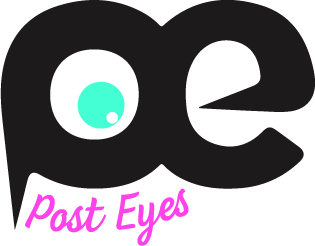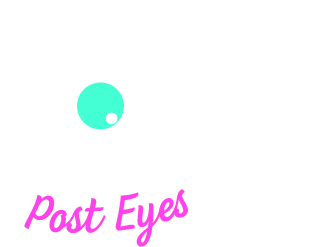In this interview with TechBullion, Niamh O’Connell, a senior business development manager at CasperLabs, discusses the value of blockchain technology as a benefit to the supply chain, her prior experiences in the blockchain sector, and the aspects of the current blockchain technology market that most excite her.
Tell us more about yourself, please
My name is Niamh (Neeve) O’Connell, and I am a senior business development manager at CasperLabs.
Since 2016, I’ve worked in the blockchain sector. I co-authored a number of blockchain studies and was recognized as the “Blockchain Leader of the Year” at the Dublin Tech Summit in 2018. In addition, I’m a co-founder of BlockW, a female-led project that offers a forum for discourse on matters pertaining to blockchain jobs.
I earned a Master of Science in Management Consultancy from University College Dublin and a Bachelor of Business Studies from Trinity College Dublin.
Tell us more about your position at CasperLabs and your professional background
Being a senior business development manager at CasperLabs is a highly exciting job. I mostly engage with businesses to teach them how to incorporate blockchain (and NFTs) in their thinking and operations in order to most effectively commercialize their operations. I also invested time in go-to-market strategy initiatives and provided support to CasperLabs and our clients as they considered the best way to launch a product at scale.
Creating new blockchain use cases for organizations and guiding them through a process that leads to them seeing “the vision” and suddenly getting it and buying into the idea are the creative and imaginative aspects of my job that I really like. I also appreciate assisting businesses in choosing the Casper solution or tool that best suits their requirements in order to scale and launch their business in Web3.
As a part of the founding team that established and expanded the company’s blockchain lab for Europe, the Middle East, and South Africa, I began my career at Deloitte. Prior to that, I worked with Treum to build up their SaaS blockchain supply chain platform and co-led the business’ customer adoption division while I was with ConsenSys Ireland in 2018 and ConsenSys U.S. in 2020. The first few production-grade blockchain applications for consumer packaged goods and the food & agricultural sector were also something I worked on in 2018.

What aspect of blockchain do you find most exciting in 2022?
The fact that the industry is uniting and investing in cross-blockchain research, instruction, and collaboration across the many ecosystems so that developers, businesses, and users may transact across numerous blockchains and have more options excite me the most! Chain interoperability
This is a major area of focus for all blockchain companies and foundations in charge of managing the growth of the blockchain protocol ecosystem since this will aid in promoting adoption. For instance, DotOracle Network and Arcadia, a company that develops blockchain software and offers security consultancy, collaborated to launch the first Casper bridge with Ethereum. The ability to transfer virtual currency between Casper and MoonBeam Polkadot, Binance Smart Chain, Avalanche, Polygon, Fantom, and Tomochain will soon be available to users. Adoption will benefit from this because many of these integrations are made possible by ecosystem grants.
You recently returned from Davos, where you facilitated discussions on the blockchain. What about NFTs, the future, and the events most inspired you?
Davos is a showcase of the top innovative thinkers who are changing how we live and work on a global scale. It was a major victory when Eva Kaili, Vice President of the European Parliament, and other prominent business figures from around the world declared blockchain to be an industry at Davos. Leaders from around the world confirmed that blockchain is a strategic necessity, and at our Blockchain Hub, we got a close-up look at the new products, experiences, and services that were developed and showcased around digital assets, enterprise & government applications, and metaverse NFTs that address current problems in real life.
Could you analyze the operation of the blockchain supply chain and the significance of the blockchain as a benefit to the supply chain? Would you mind sharing any use cases with us?
The majority of current use cases that are being widely embraced revolve around logistics and provenance tracking of items, which truly establishes the groundwork for all future use cases to be built upon. Once you have a picture of a supply chain, there is a tonne of things you can do before and after the sale to better engage the many stakeholders, whether they be suppliers, OEMs, producers, or customers. You may demonstrate the genuineness of your goods, design play-to-learn or play-to-participate post-sale experiences, and reward each link in the chain!
Could you explicitly address supply chains in consumer packaged goods, food and beverage, and automotive as a global blockchain expert? What advantages can blockchain offer these sectors?
There are so many possible applications for technology that might help various businesses along a supply chain. I can think of a few that I haven’t yet discussed with you, like:
Offsetting carbon emissions: Offsetting carbon emissions involves giving suppliers (discounts) and customers rewards for taking part in firm programs that lower emissions, such as recycling products after their useful lives or reusing raw materials in manufacturing.
Know your supplier: Reputation-based partner marketplaces build a searchable and transparent supplier network where businesses can choose suppliers based on performance and reputation.
Recall management: By keeping track of quality control checks, stakeholders could be alerted to a failure before the product is released, preventing the use or purchase of harmfully contaminated products.
Would you kindly elaborate on the value of blockchain as a supply chain during a pandemic or a period of inflation as well as how this invention benefits businesses?
Take the food industry, for example. Concerns about global food security may be reduced via blockchain. A 360-degree picture of an open supply chain would make it possible to manage, track, and redistribute food.
To put this in perspective, 2 billion people could be fed with the approximately 1.3 billion tonnes of food that is wasted annually.
Starting with a supply chain view, other use cases are built on top using an incentive system that encourages engagement from all relevant parties. The gaming, entertainment, culinary, and luxury industries are already actively offering consumers rewards-based NFTs to encourage and reward involvement through an immersive or interesting experience.
What is necessary for NFTs to become widely used, and why are NFTs important?
As you can program NFTs (non-fungible tokens) to transport data back and forth, they function somewhat like minicomputers. They could, for instance, collect fees. They do more than merely signify ownership of unique items like artwork. They have a tonne of utility, but their utilization and worth haven’t yet been properly appreciated.
In terms of widespread adoption, we’re still a long way off. To begin with, increased training and standards across the board will aid in enhancing UI/UX usage and applications across sectors. We need to get to the point where NFTs are easy to create, assemble, and operate but with less packaging, similar to where Apple devices are today!
What exactly is a metaverse, and why is it relevant to business?
A metaverse is a virtual environment where immersion is the main focus. You must be able to build a community and provide value for that community using non-cash incentives in order to have such an experience. Businesses have the ability to develop totally new experiences, goods, and services, as well as new economies, to support them. Metaverses, in my opinion, will help unlock the doors to NFT utility.

What blockchain project are you currently working on that thrills you the most?
We at CasperLabs are enabling companies to quickly construct and self-manage Casper NFTs via a simple, no-code interface. This means that companies can own their own digital NFT shop and disseminate NFTs through a variety of channels, including social media, augmented reality and virtual reality, GPS drops, QR codes, and email. This was just disclosed in conjunction with BLOCKv and SmartMedia Technologies, our partners.
I’m eager to guide brands through this and show them how to consider incentive structures that are appropriate for their target audience and ecosystem in order to generate value and, as a result, a sustainable community. Restoring consumer control and rewarding them for the part they play in influencing both products and their local communities is necessary. After all, the people who really utilize the products are the true experts.
What advice do you have for people who wish to work in blockchain?
In both traditional corporate occupations and the developer and creator communities, blockchain is opening up a new frontier of career prospects. Finding out what you are passionate about is something I advise doing before attempting to apply it to the blockchain business. With the growth of Web3, there have never been so many roles available, so take advantage of this opportunity. Additionally, get involved in groups and activities and interact with others, like myself, at https://www.linkedin.com/in/niamhoconnell1.
I urge you to sign up for BlockW if you’re a woman: https://www.linkedin.com/company/blockw/





